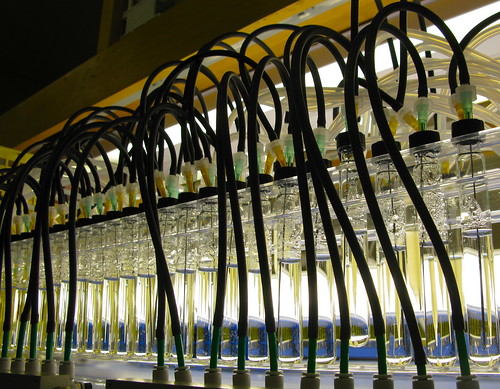 I like Michael Pollan for many reasons, the obvious being that he is THE leading voice in the local, organic food movement. His books have singlehandedly brought the food policy discussion into settings where it was never before conceivable, ranging from cocktail parties to office water coolers. If it were not for Pollan, the current food movement would look absolutely nothing it does today.
I like Michael Pollan for many reasons, the obvious being that he is THE leading voice in the local, organic food movement. His books have singlehandedly brought the food policy discussion into settings where it was never before conceivable, ranging from cocktail parties to office water coolers. If it were not for Pollan, the current food movement would look absolutely nothing it does today.Another obvious reason why I admire Pollan is that I happen to like his particular food philosophy, which he sums up in seven simple words: "eat food, not too much, mostly plants." Who can argue with that? Even I, a known connoisseur of bacon in its myriad forms, and a person who consumes quantities of food at the occasional Dim Sum Sunday that no sane observer could call "not too much," can find little wrong with Pollans statement.
Which brings me to the less obvious reason why I like Michael Pollan -- Michael Pollan is Mellow. Mellow with a capital "M." Here is a guy who has devoted his entire life to the study of food policy, yet who sums up that life's work in "eat food, not too much, mostly plants." Seriously. Can you imagine PETA getting a crowd rowdy with a reasonable statement like that? Now way -- they have "Meat is Murder" and "Save the Sea Kittens" (I am not even joking about that last one). Or on the other end of the spectrum -- try getting farmers and middle Americans angry over Pollan's slogan. Not gonna work. Instead, we hear hyperbole about rising food prices, our planets inability to feed the people who live on it, and how the government is trying to control us. This is the real reason why Michael Pollan is my hero. He is so mellow in his approach and policies (in addition to just plain being right, which I admit helps) that no one can successfully argue with him.
Take for example Pollan's recent NPR debate with Blake Hurst, a blogger who wrote The Omnivore’s Delusion: Against the Agri-intellectuals (you can listen to the interview here). The debate begins with Pollan, in his mellow, even-keeled voice, outlining his basic position. Great. Cue Hurst.
The first thing we hear from him (in a pronounced twang) is a hokey, overpracticed statement about how it is not true when Pollan says the agricultural industry hides behind farmers. Really, Hurst continues, the only person who helped him write his essay was his wife, (she needed to "help him sound out the big words" since he is no intellectual). He talked about how he wasn't really growing a mono culture since he switches between soybeans and corn every year. He talked about how it was unfair of Pollan to ask him and other farmers to go back to the farming methods their grandparents had used in the 1930's. In other words, he used some well known, cheap debating techniques to try and score points with NPR's listeners, and he did it all in that twang and using these rehearsed colloquialisms that made me want to punch him in the face. In then process however, he left himself open to about 1000 different logical attacks from Pollan, and I couldn't wait for Pollan to seize on one and jump down his throat.
But he didn't. Pollan remained calm as an organic cucumber. He just kept making his points in that same mellow tone of voice. And I eventually realized why. As the debate went on, Hurst became more and more flustered, and less able to respond to anything Pollan said. The debate wasn't going the way Hurst had planned it at all. His whole shtick was to play the part of the small farmer being yelled at by some agri-intellectual who didn't know what he was talking about. But Pollan didn't take the bait. He refused to get ruffled, no matter how little sense Hurst made. And the more Hurst realized that Pollan wasn't going to let him play his part, the less sense he started making. By the time the debate ended, all Hurst's little colloquialisms were gone, and even the twang had softened. There could be no doubt who finished on top.
Please listen to the full interview to see the master at work. We could all stand to take a lesson in mellowness from this man, not the least of which is to eat food, not too much, mostly plants.





































